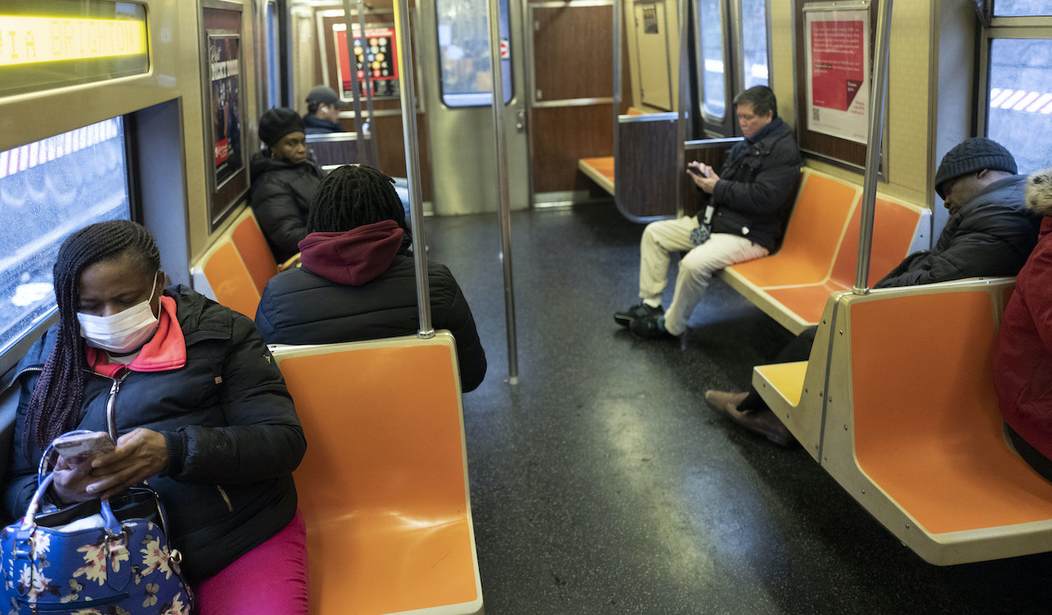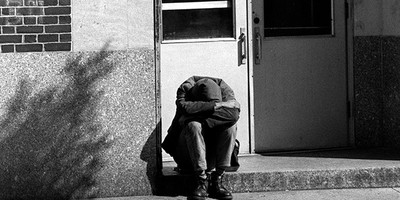It's unnerving, and perhaps instructive, that the arrangements elites have been prescribing for dealing with what they call our most dangerous environmental threat -- climate change, formerly known as global warming -- are almost precisely the opposite of the arrangements deployed to deal with the more immediate threat of COVID-19, aka the novel coronavirus.
To reduce the carbon dioxide emissions thought to produce catastrophic climate change, Americans have been urged to cluster in large, densely populated cities. Large apartment buildings with small dwelling units, it is claimed, consume less energy and emit less carbon per capita than 2,500-square-foot houses spread out on suburban cul-de-sacs or newly constructed on exurban farm fields.
Lone drivers commuting to work or heading to shopping malls in massive automobiles, it is argued, waste natural resources and pollute the environment. It would be better for commuters to switch to trains or subways, and for shoppers to walk to neighborhood stores. In this spirit, mayors and city councils have blocked autos from bicycle lanes, hailing bicyclists' healthy behavior while ignoring the unnerving number of fatal and disabling accidents.
All these policies, it turns out, are just the opposite of what's needed to stop or slow down a global pandemic. Self-distancing and isolation, not clustering, are necessary. The broad aisles of the suburban supermarket and disposable plastic bags are less likely to transmit disease than the close quarters of the local mini market and oft-used recyclable shopping bags. Heading in your own car to a drive-in testing center is better than riding the subway and waiting in a crowded line.
Recommended
So it's no surprise that the part of the United States hardest hit by COVID-19 so far appears to be metro New York City, to the point that the federal government has advised people traveling from there to self-isolate for 14 days. Nor is it surprising that the part of Italy hit hardest is around its largest metro area, Milan, and the densely populated and economically productive Po Valley just to the south. And that the part of Spain hit hardest is metro Madrid.
Densely populated central cities produce more than their per capita share of economic output. The face-to-face contact they foster results in creativity in everything from finance to the arts. But historically -- as most of us forgot until the last few weeks -- they have also been incubators of deadly disease.
"When a man is tired of London," the 18th-century writer and wit Samuel Johnson proclaimed, "he is tired of life." That was literally true in his time. London's population doubled in that century, from half a million to over 1 million, even though it had more deaths than births almost every year. It was a measure of the opportunities it offered that hundreds of thousands of Britons, like the young Johnson, were willing to take their chances there anyway.
Over time, however, central city density has been reduced, as people have moved to healthier and more spacious suburbs. Fans of densification took heart when central city populations increased after the 2007-08 financial crisis. Manhattan's population and subway ridership spiked.
But those trends tapered off in the mid-2010s, as new housing was once again built in outer suburbs and exurbs and bought by families seeking more space and better schools. That's actually in line with the dominant trend for more than a century. Manhattan had 1,630,000 residents in 2019, far below the peak of 2,330,000 -- half of them south of 14th Street -- in 1910.
COVID-19, by revealing vulnerabilities no one gave much thought to, is likely to reduce densification further, if only marginally. That may have some negative effect on gross domestic product or certain forms of creativity, perhaps a greater effect than is theoretically desirable.
A complicating factor is that we are at a moment in political history when voting behavior and stubbornly held partisan preferences are highly correlated with population density. High-density central cities, some close-in suburbs and university towns vote heavily Democratic. The low-density countryside votes heavily Republican.
This was not always so. A century ago -- during the 1918-20 influenza epidemic, by the way -- New York City was heavily Democratic; Philadelphia was heavily Republican; and Chicago was marginal and up for grabs. Vast swathes of the rural South voted 80-plus percent Democratic. Great hunks of northern New England and the upper Midwest voted 70-plus percent Republican. The pandemic seemed to hit both parties equally.
Today's pandemic may end up hurting liberals more than conservatives. This year, it's certainly hurting Americans and others much more than any of the projected effects of climate change.
Michael Barone is a senior political analyst for the Washington Examiner, resident fellow at the American Enterprise Institute and longtime co-author of The Almanac of American Politics.

























Join the conversation as a VIP Member